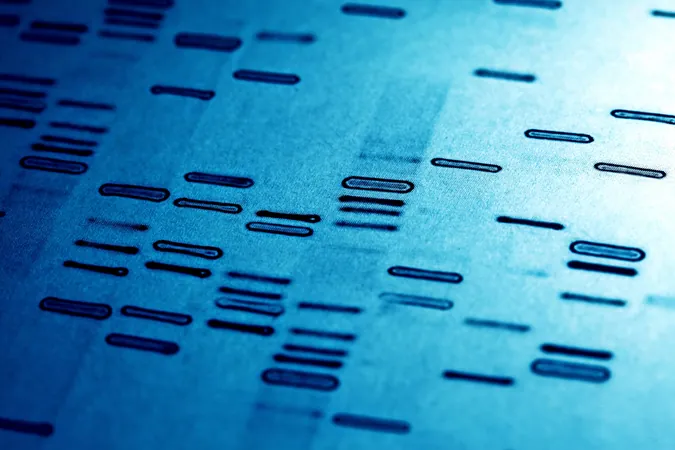
Revolutionary DNA Technique Creates 3D Facial Images—Is This the Future of Crime Solving?
2025-05-09
Author: Wei Ling
Unveiling Faces Through DNA
Imagine being able to visualize a suspect's face just by analyzing their DNA! A groundbreaking new technique called Difface is set to revolutionize the world of forensic science by reconstructing 3D facial models using a person's genetic material.
How Does Difface Work?
Harnessing the power of single nucleotide polymorphisms (SNPs), Difface generates '3D facial point clouds,' which are intricate data sets that map out the exterior features of a face. Researchers showcased this technique in the respected journal Advanced Science, claiming that it could become a game-changer in law enforcement—offering a way to visualize previously unknown suspects.
Proven Accuracy with Real Data
In a striking study involving a Chinese database, the researchers tested Difface and found it remarkably effective at generating accurate facial reconstructions directly from DNA data. When they incorporated additional details like age, sex, and body mass index, the realism of the 3D images improved significantly.
Future Age Projections—A Glimpse into Tomorrow
Incredible as it sounds, Difface is capable of projecting how a person might look at different stages in life using just their DNA. Lead researcher Luonan Chen of the Chinese Academy of Sciences emphasized this revolutionary potential, underlining how this method could evolve over time.
Challenges and Ethical Concerns
However, despite its impressive performance, Difface isn't without hurdles. One major concern is ensuring it works effectively across diverse ethnic groups; the researchers acknowledge that more validation is needed to make it universally applicable. Furthermore, there are significant ethical considerations. The ability to predict physical features from genetic information raises alarms about privacy and potential misuse of sensitive data, leading to discrimination based on genetic characteristics.
Controversies in Forensic Applications
Forensic DNA phenotyping (FDP) has emerged as a vital tool in criminal investigations, often rescuing cold cases. Nonetheless, it has also sparked criticism, especially when attempting to predict traits like facial structure. Critics warn about the risks of unfair targeting and wrongful suspicion, an issue highlighted by a 2022 incident involving the Edmonton Police Service, which sought public assistance in identifying a suspect through a DNA-generated image but quickly retracted that request.
Is the Future Bright or Risky?
As intriguing as the prospects of Difface and similar technologies may be, they beg the question: Are we prepared for the ethical dilemmas they introduce? This stunning blend of genetics and technology holds immense promise, but navigating the moral landscape will be crucial as law enforcement looks to integrate these advancements into practice.



 Brasil (PT)
Brasil (PT)
 Canada (EN)
Canada (EN)
 Chile (ES)
Chile (ES)
 Česko (CS)
Česko (CS)
 대한민국 (KO)
대한민국 (KO)
 España (ES)
España (ES)
 France (FR)
France (FR)
 Hong Kong (EN)
Hong Kong (EN)
 Italia (IT)
Italia (IT)
 日本 (JA)
日本 (JA)
 Magyarország (HU)
Magyarország (HU)
 Norge (NO)
Norge (NO)
 Polska (PL)
Polska (PL)
 Schweiz (DE)
Schweiz (DE)
 Singapore (EN)
Singapore (EN)
 Sverige (SV)
Sverige (SV)
 Suomi (FI)
Suomi (FI)
 Türkiye (TR)
Türkiye (TR)
 الإمارات العربية المتحدة (AR)
الإمارات العربية المتحدة (AR)